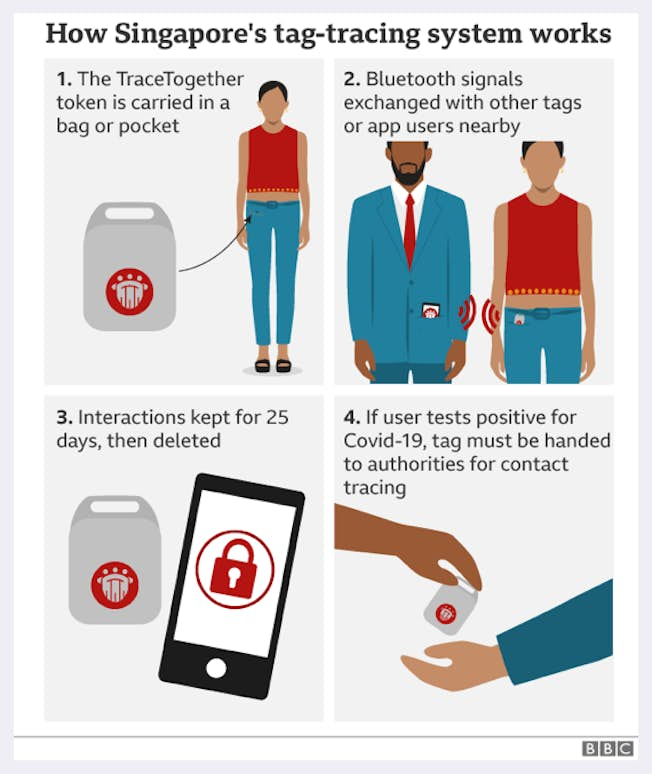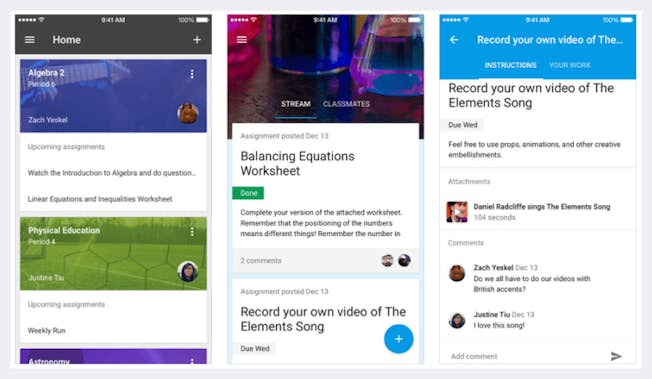Dec 21, 2020
2020 in Mobile Marketing - a Review of the Year
2020 is nearly over and what a year it’s been. After the last chime of auld lang syne, no one could have predicted the catastrophic events that unfolded across the globe—and in many ways, the world has changed forever.
The threat of COVID-19 thrust us into a state of mass isolation and as such, the ways we work, live, and communicate have been transformed completely.
In response to this seismic societal shift, marketers from all sectors have been forced to reevaluate the way they connect with consumers across touchpoints. And, in the Year of The Pandemic, mobile marketing has seen its lion’s share of the action.
Here we take a look back at mobile marketing in 2020, exploring the highs, the lows, and what the future holds for this most connective of mediums.
Living in a COVID world: a global lean on mobile technology
We've been living in the mobile world for a long time. In fact, the average person spends around five hours a day engaging with their smartphones.
Since the spread of the pandemic, mobile usage has increased, with 46% of UK consumers as well as 39% of US consumers confirming they have used their smartphone more during periods of lockdown.
The value of mobile marketing is undeniable: it offers brands and marketers of all types the opportunity to engage or inspire their consumers without geographical limitations, after all.
COVID-19 has accelerated digital transformation across industries, with even technologically immature institutions such as the British healthcare service, the NHS, embracing the power of mobile communication and innovation in 2020: 38% of people have increased healthcare tech usage in the last nine months of the year.
Bluetooth-based COVID tracing apps have been widely adopted across the globe in 2020—Singapore’s TraceTogether offering saw half a million downloads within the first 24 hours of its launch.

And, based on TraceTogether’s framework, Australia’s COVIDSafe became a central part of everyday life during its initial lockdown.
Despite the success of these developments in Australia and Asia, a lack of adoption, poor governmental coordination and privacy issues have plagued tracing app developments in the UK and US.
For better or worse, living in a unique period where people are pushed in and out of isolation, mobile technology has become integral to the human experience—even more so than it was pre-pandemic—presenting a dynamic mix of opportunities, innovations, and challenges in the process.
We are indeed living in a COVID world and mobile marketing has proved to be a lifeline for many marketers the world over.
Mobile Marketing in 2020: the Roundup
As one of the categories with the highest rate of growth, the mobile market as a whole is expected to reach a value of 337.8 billion by 2027. That’s a pretty colossal rate of growth— 22.9% (CAGR) to be precise.
Mobile has certainly continued to make its mark in 2020. Let’s look at some of the peaks.
The Peaks
This year’s surge in mobile usage has had a positive impact on mobile app adoption, particularly in the areas of video streaming (SVoD), retail, gaming, personal finance, video conferencing, fitness, and food delivery.
New consumer behavior and the everyday logistical challenges presented by COVID-19 has only served to highlight the value of mobile innovations and, in turn, marketing. In fact, 70% of top mobile marketers believe the pandemic has strengthened their promotional efforts.
Not only has mobile app engagement skyrocketed—with more than 623 billion impressions across 1,051 mobile apps, 8.8 billion clicks, 381 million installs and 487 million first-time events recorded from September 1, 2019 to August 31, 2020—consumer retention rates have also soared.
This dynamic playing field has empowered mobile marketers to invest more in their promotional efforts, placing a focus on the content, communications, and user experience (UX) of their mobile offerings.
In addition to many COVID-19 symptom checker apps and Zoom’s mobile offering, fitness tracker app Strava (recording 3.4 million downloads in May 2020 alone) and Google Classroom (earning 28.2 million downloads worldwide) are among the UK’s most popular mobile apps for 2020.
To capitalize on the uptake in exercise and mass gym closures, Strava, for instance, added new route suggestion functionality to its app to increase engagement this year. The fitness tech provider also leant on the community aspect of its brand identity by promoting virtual fitness challenges while placing greater focus on Strava Stories. These initiatives served to drive awareness and encourage consumer trust during 2020.
In addition to mobile app adoption, SMS marketing has enjoyed its time in the sun in 2020—a trend that’s likely to stick in 2021.
Beauty brand Pür, for instance, pivoted its SMS marketing communications, crafting messaging that is less promotional or salesy and more conversational, as explained by VP or marketing and innovation, Tisha Thompson:
“Since quarantine, we pivoted our email and text messaging to be less promotional and focus more on the quality and benefits of our products, bringing a little bit of lightheartedness. Although we have still thrown in a few promotions here and there, it’s not the focus of the messages.”
As a result of this SMS marketing shift, the brand has earned a 20% increase in new subscribers. A testament to the newfound value of SMS marketing in 2020.

Another clearcut mobile success story of 2020 is TikTok. The video-centric social media app has offered comedic relief, comfort, and an escape from the monotony of lockdown, with a mix of creative visual shorts emerging from the woodwork. The broad rise of the platform during the pandemic has given brands ample opportunity to connect with their audience this year—with the likes of Twitter, Facebook, and Instagram transforming into virtual comedy clubs.
Takeaway: The key message from mobile marketing in 2020 is that the pandemic has highlighted the universal value of the mobile experience, giving marketers an even more prominent platform for engaging an incredibly captive audience. This trend is set to continue in 2021.
The Troughs
While 2020 has indeed been a prolific year for mobile marketing, a few challenges and roadblocks have emerged from the digital woodwork. Mobile is a fruitful market, but with increased saturation, making your mark can prove difficult—especially if your budget has been stretched at the hands of COVID-19.
In the first quarter of 2020, mobile ad spend dropped by around 15%. In ‘regular’ times, this decline would prove concerning, but in 2020 it demonstrates mobile’s endurance when compared with ad markets, including desktop which has seen its revenues fall by 25%.
To make yourself standing out when ad budgets are strained is not easy and as such, mobile marketers need to work extra hard to meet the ever-growing needs of their audience.
Another cautionary mobile marketing roadblock that we’ve seen in 2020 boils down to a rise in fraudulent activity.
A report from Adjust FPS suggests that fake users–those that emulate clicks, installs, and in-app activities–are up 15% since 2019. These fraudulent behaviors, most likely a side-effect of the global surge in mobile app adoption, are resulting in mobile marketers wasting their ad budgets on empty engagements or transactions. As mobile adoption is likely to continue its rise in 2021, fraudulent activity is certainly something to look out for when it comes to paid mobile advertising.
Our final mobile marketing trough is related to scalability. Circling back to Google Classrooms as an example, even this global tech colossus couldn’t keep up with the unexpected change in pace caused by COVID-19.

As school and educational institutions downloaded Google Classrooms en masse to keep their curriculums running during lockdown. An initial wave of reluctance to remote learning coupled with functionality issues (due to the sudden spike in downloads) earned Google Classrooms flocks of 1-star reviews from disgruntled students: to such an extent, that the app was almost removed from the Apple App Store.
Takeaway: Increased adoption and engagement, while positive, brings with it teething problems. Standing out in a saturated market, scaling mobile offerings to meet increased demand, and a rise in fraudulent ad budget-draining activities are this year’s main mobile marketing troughs.
Looking Forward…
This year, mobile technology has been thrust into the consumer spotlight. Not only are mobile apps and innovations entertaining and convenient but now they are seen as essential to our everyday experience.
Mobile technology has been a lifeline for many in 2020 and as its value shines into a brand new year, there has never been a better time to invest in your mobile marketing efforts.
Looking forward, here are some likely trends you should look out for:
- Increased operational and technological opportunities created by 5G connectivity.
- A greater emphasis on immersive mobile technologies including VR and AR.
- A rise in artificial intelligence (AI) and machine learning (ML) applications.
- Voice capabilities and integrations within mobile technology and communications
“In my opinion, the future of mobile is the future of everything” Matt Galligan, Co-founder of Circa
Related
Upgrade to Power Membership to continue
your access to thousands of articles, toolkits, podcasts, lessons and much much more.
Become a Power Member- Login
- View Courses
- - - -
- Courses
- Resources
- - - -
- My Account
- Change Password
- Logout






